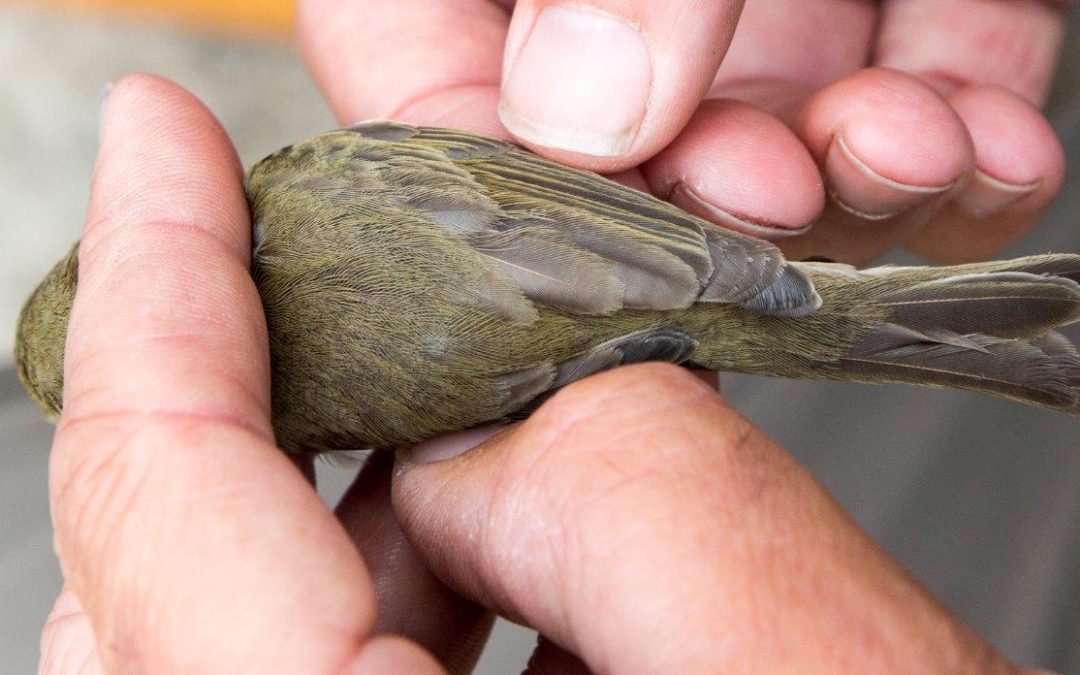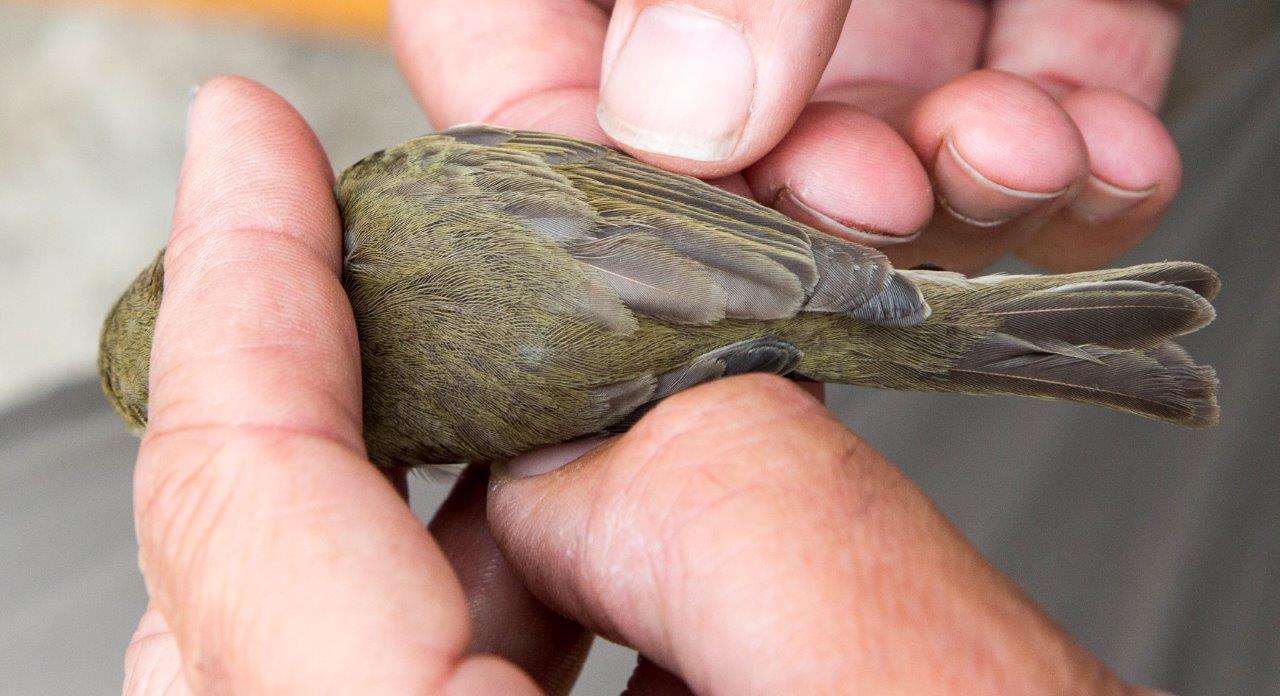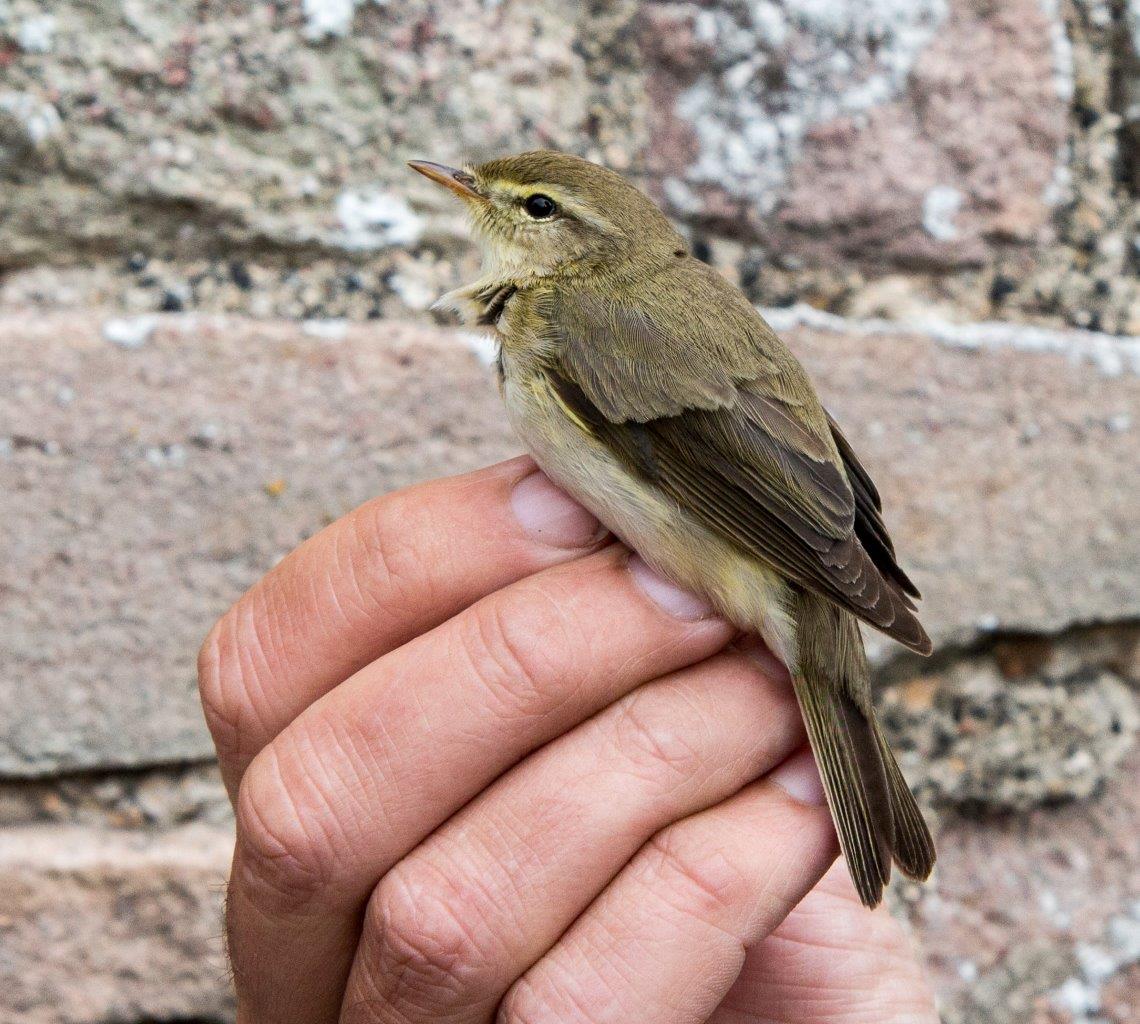
May 17th
No boots on the ground today unfortunately so I’ll catch up with sharing a bird we ringed 14th May that took a little bit of looking at…

So, 59mm wing, too small for Willow Warbler, mid range wing length for Chiffchaff. Must be a Chiff ! Hold everything, heavily worn unmoulted tertial no.9 and a few unmoulted Greater coverts. This should rule out Willow Warbler as both juvenile and adults undergo a complete moult at their wintering grounds and return to us in very fresh plumage. Those Chiffchaffs returning to us on migration seeing thier first Spring retain some juvenile feathers as this one has. Right, so back to Chiffchaff, or is it one of those hybrids that many claim occur between these two species. Lets look a bit further.

Long supercillium, very pale legs and very orange feet, perfect for Willow Warbler !

Lets get to the bottom of this one. On Willow Warbler the primary flight feathers are emarginated up to and including the 5th one (don’t forget the tiny 1st primary out of view in this photo) and Chiffchaff is emarginated up to and including the 6th Primary. So, this one is emarginated to the 5th primary, the 6th primary has no emargination, it’s definitely a Willow Warbler. So how comes it has retained juvenile feathers and its wing is too short ? Our conclusion was that the bird is in arrested moult. The situation where the progress of a bird’s moult is suspended for a period, to be resumed later. The last few feathers to be replaced and complete thier growth during wing moult are the 1st few flight feathers,on this bird the 2nd primary on closer inspection was shorter than it should have been because of the suspended moult, hence presenting a short wing length until moult is completed.

Willow Warbler – Longis nature reserve
On this photo the unmoulted tertial is easier to spot against the moulted fresh and darker ones below it. That’s that then, I think…
